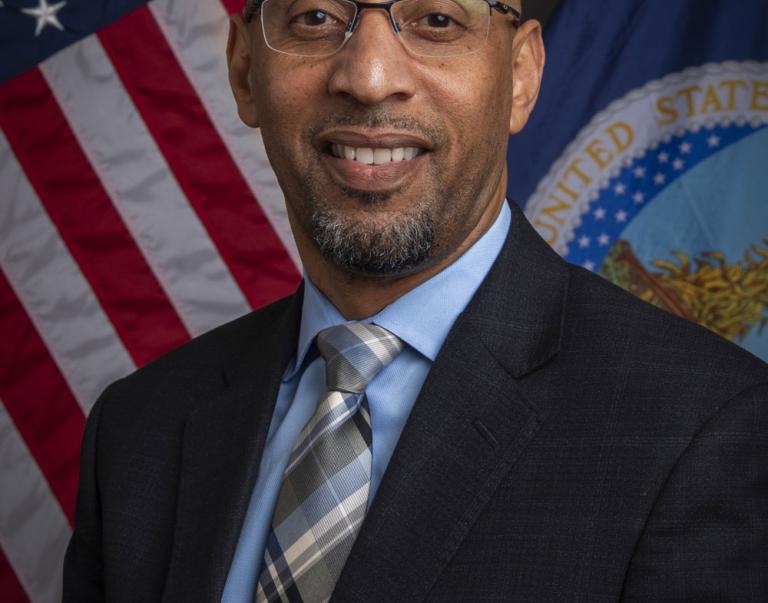WASHINGTON, Oct. 6, 2017 – U.S. Agriculture Secretary Sonny Perdue today announced employees and agencies in the U.S. Department of Agriculture (USDA) continue to offer vital resources to help citizens and communities recover from the devastating effects of hurricanes Harvey, Irma, and Maria.
“USDA remains steadfast in its mission to work on behalf of every community in Texas, Florida, Georgia, the Commonwealth of Puerto Rico and the U.S. Virgin Islands to ensure that life-sustaining resources are available to our neighbors as they begin the hard work of rebuilding their lives and communities following these devastating storms,” Perdue said. “We are coordinating hour-by-hour and day-by-day with state and local governments, the private and non-profit sectors, dozens of our federal sister agencies, and in some cases, key international partners, to bring aid to everyone in need.”
At the same time, Perdue noted that communities face a long, uphill battle on the road to recovery and pledged that USDA will do all it can to aid in that recovery. The following summary of key actions that USDA has taken to help individuals and communities cope with the aftermath of hurricanes Harvey, Irma, and Maria exemplifies USDA’s commitment to all who have been impacted.
Animal Plant Health Inspection Service (APHIS)
APHIS' experience in responding to plant and animal health emergencies is vital to FEMA as it responds to recent hurricanes and a wide variety of emergencies. For example, APHIS continues to coordinate with multiple non-governmental organizations (NGOs) to ensure that pet food and resources are sent to points of distribution where human supplies are available. The agency is helping owners relocate with their pets and making entry of those pets into the United States as easy as possible. APHIS coordinated response efforts for exotic animal owners and zoos affected by the hurricanes.
At the request of Puerto Rico’s government, APHIS is working to get pet assessment teams (NGOs) into the commonwealth to assess shelters and rescue facilities. In Texas and Florida, APHIS identified locations of stranded livestock and dropped feed for stranded livestock in Texas and worked with officials there identify and re-patriate those that can be identified. In Florida, the agency played a key role in bringing a train load of much needed feed for dairy cows. Additionally, APHIS facilitated coordination among non-governmental organizations interested in providing hay, feed, and other products to support horses and livestock in Puerto Rico and the U.S. Virgin Islands.
Food and Nutrition
As of September 29, USDA provided 40,296 cases of USDA Foods that have been used by voluntary organizations to feed residents in Puerto Rico congregate settings and shelters. USDA also approved Puerto Rico to operate the Disaster Household Distribution program, which provides boxes of nutritious, USDA Foods. Approximately 500,000 households are expected to benefit.
FNS’s Supplemental Nutrition Assistance Program (SNAP) has responded with disaster assistance to households affected by the hurricanes by providing DSNAP to new households and replacing and supplementing food benefits to current participants. As of October 1, SNAP benefits to victims of the hurricanes have totaled over $860 million. Eligible households continue to apply for this important disaster relief.
FNS has also issued approvals across four jurisdictions for flexibilities to meal patterns and other requirements. The action will impact nearly 4.7 million children.
- FL National School Lunch Program (NSLP): Granted flexibilities to 48 counties, potentially affecting over 2.6 million students.
- GA NSLP: Granted flexibilities apply to 38 counties and will potentially impact more than 92,000 children.
- TX NSLP: Granted flexibilities, at their peak, applied to 39 counties and potentially impacted more than 1.55 million students.
- Puerto Rico NSLP: Granted flexibilities that will potentially impact over 400,000 students across the island.
More details on the Food Nutrition Service’s (FNS) efforts are provided at: www.fns.usda.gov/pressrelease/2017/013017
Finally, the USA Foods division of USDA’s Agricultural Market Service (AMS) is working with FEMA to expedite purchases and deliveries of food for families in Texas and Puerto Rico. So far, 20 truckloads of food have been delivered to Texas for Disaster Household Distribution products weighing over 700,000 pounds. The program has also delivered 35 truckloads of ready-to-feed infant formula, supplemental drinks, baby food stage II, baby cereal, bottles and nipples for families in Puerto Rico.
Farm Service Agency (FSA)
FSA provides much-needed hurricane recovery support to farmers, foresters and livestock producers through an extensive portfolio of emergency commodity, conservation, livestock and credit disaster assistance programs. FSA disaster assistance program benefits include loans and assistance for conservation, forestry restoration, assistance for livestock, honeybees and farm-raised fish, tree assistance and non-insured crops as well as emergency loans for access to capital.
For those producers located in counties where FSA’s local infrastructure has been impacted, the agency has established state-specific toll-free information lines where producers in need can receive immediate information regarding available FSA assistance. Likewise, producers should be looking to local media and other information channels for announcements of upcoming USDA disaster assistance workshops in which FSA and other USDA agencies will participate. These meetings will be held in hurricane-impacted counties and are free and open to the public.
The Forest Service (FS)
There are currently 298 personnel mobilized through the Forest Service (108 from the Forest Service) assigned in the U.S. Virgin Islands and Puerto Rico.
Incident Management Teams (IMTs) are assessing fire protection capabilities and needs, establishing and managing Logistics Staging Areas (LSA) for commodity and resource receiving and distribution, supporting jurisdictional emergency operations centers, and supporting the Isolated Communities Task Force. Firefighting resources – chain saw specialists in particular – are assisting with emergency road clearing to provide access for search and rescue crews and other emergency responders. Forest Service Law Enforcement Officers are providing force protection for responders.
As of early October, 632 personnel have been mobilized through the Forest Service (210 from the Forest Service alone) for hurricanes Harvey, Irma, and Maria.
Natural Resources and Conservation Services (NRCS)
NRCS works with producers and communities to solve natural resource challenges, and several programs are available to help with recovery following disasters. NRCS has more than 250 employees in Texas, Florida and Puerto Rico working to provide conservation assistance to farmers and ranchers across hurricane impacted states. This includes assessing damage and providing technical advice to individuals and communities on restorative actions. NRCS will dispatch next week a team of employees from around the country to support efforts in Puerto Rico.
To date, NRCS has fielded more than 1,200 requests for conservation technical assistance related to hurricane impacts, and is working with FSA to set up disaster assistance workshops in every FEMA disaster-declared county (public/individual assistance designation) to provide program information that can assist impacted customers.
In Texas, Florida and Puerto Rico, the Environmental Quality Incentives Program (EQIP) is assisting agricultural producers plan and make conservation improvements on lands damaged by natural disasters, including flooding and severe rain events. In Texas, NRCS has already announced a special signup for impacted producers to apply for assistance. For example, soil erosion often occurs following these storms, and these practices help prevent erosion in the future.
Through the Emergency Watershed Protection Program, NRCS works with local government entities and Tribes in impacted counties to remove debris, stabilize streambanks, fix water control structures, among other practices.
Risk Management Agency (RMA)
To date, the Risk Management Agency (RMA) and Approved Insurance Providers have facilitated more than $2.6 million in indemnity payments to producers affected by Hurricanes Harvey and Irma. In anticipation of the scale of damage from the hurricanes, RMA took proactive steps to ensure the efficient and reliable delivery of the crop insurance program. These included working with insurance providers to ensure enough loss adjusters were available to process claims in a timely manner, and authorizing Emergency Loss Procedures to streamline determinations on specific crops and accelerate the adjustment of losses and issuance of indemnity payments to policyholders in impacted areas.
In Puerto Rico specifically, producers with coverage through the RMA administered federal crop insurance program can contact the Corporation de Seguros Agricolas (CSA) for issues regarding filing claims. Those who purchased crop insurance will be paid for covered losses.
In addition, RMA has a standard reinsurance agreement in place with the Commonwealth of Puerto Rico to offer crop insurance on a variety of crops and plantations (plants) for producers through the Corporacion de Seguros Agricolas. RMA has been in frequent communication with CSA to ensure producers in Puerto Rico will get paid for losses in a timely manner.
Rural Development (RD)
Rural Development (RD) staff are working in joint field offices with other USDA agencies in Austin, Texas, Tallahassee, Fla. And Puerto Rico, to assist both agency borrowers and non-borrowers impacted by the hurricanes.
RD is working closely with FEMA on a number of fronts to help people find temporary housing. In addition, the agency has worked with its housing industry partners that underwrite loan guarantees, alerting them of the FEMA voucher program for displaced homeowners.
RD has also been working closely with electric cooperatives in Texas, Florida, and Georgia to restore power in hurricane effected areas.
Finally, RD is providing up to $1 million for technical assistance and training grants for disaster recovery through its Technical Assistance and Training Grant Program, which makes grants to public bodies and private non-profit corporations, (such as States, counties, cities, townships, and incorporated towns and villages, boroughs, authorities, districts, and Indian tribes on Federal and State reservations) to provide water and wastewater systems with technical assistance and/or training on rural water systems.
Assessing the Economic Impacts to Agriculture
Staff in USDA agencies are collecting and analyzing data that will provide an assessment of the impact these hurricanes had on harvested acreage and agricultural commodities. The National Agricultural Statistics Service (NASS) is collecting harvested acreage information for a number of crops in affected states in preparation for the October 12 Crop Productionreport. These additional data will help to better assess the full impact and provide official U.S. statistics for use with damage assessments, payments, research, and commodity supply estimates for marketing, planning, and many other private and public uses.
Depending upon the state, NASS will collect information on Upland cotton, peanuts, soybeans, rice, sorghum, sugarcane, corn, alfalfa, and other hay. If the newly collected data justifies any changes from the September 12 estimates, NASS will publish updated harvested acreage estimates in the October 12 report. Additionally, weekly Crop Progress reports provide up-to-date summaries of crop conditions.
The Economic Research Service (ERS) provides Commodity Outlook Reports that contain information on the impacts of the 2017 hurricanes on various agricultural commodities. ERS makes these reports, and links to other useful information, available in the ERS Newsroom.
# # #
USDA is an equal opportunity provider, employer and lender.



